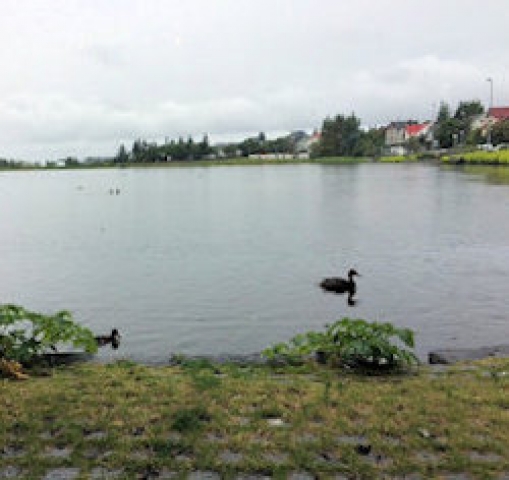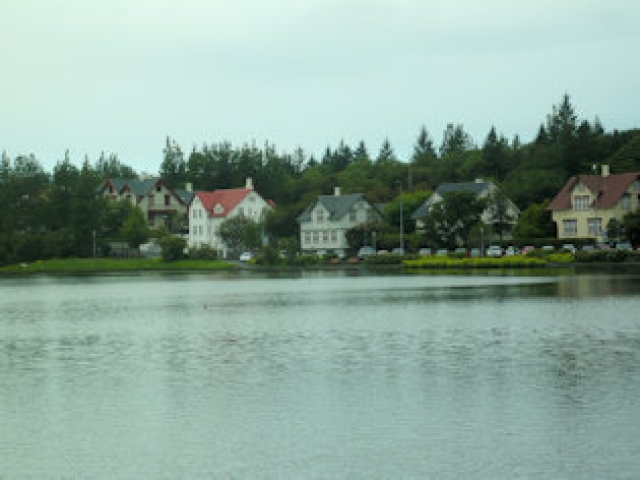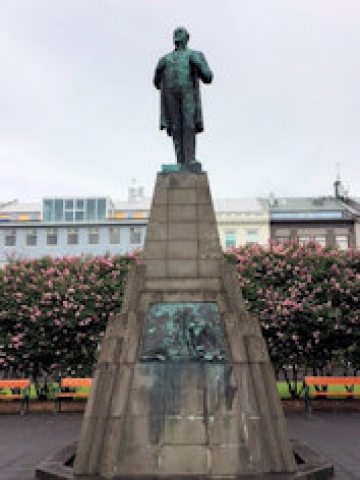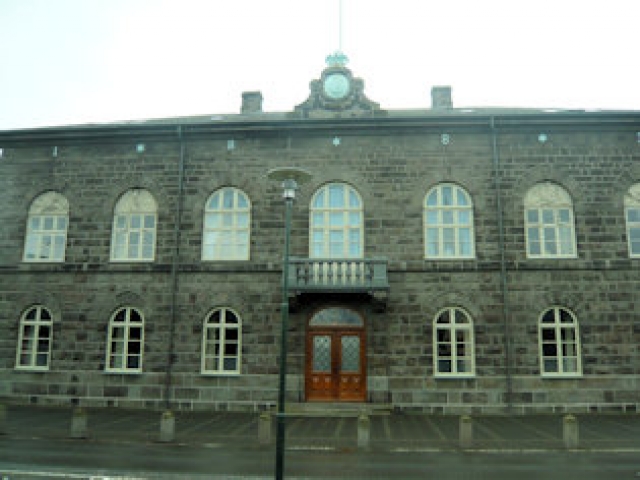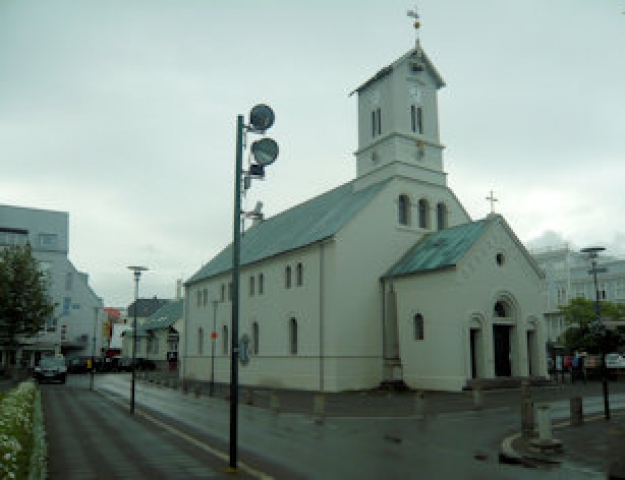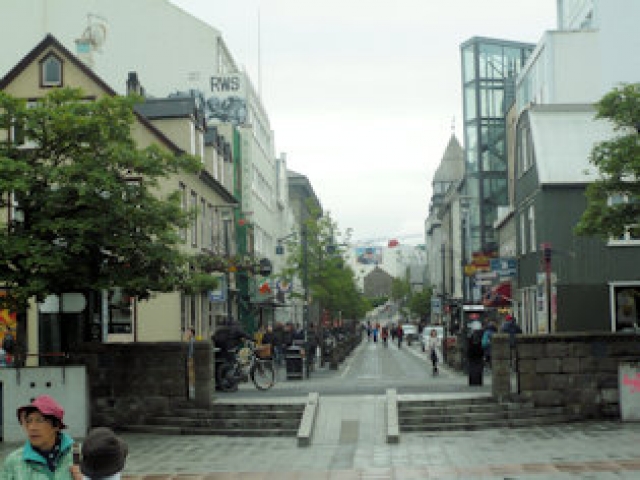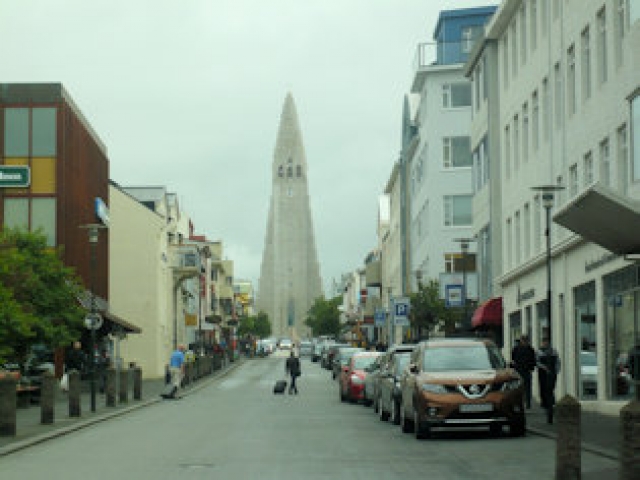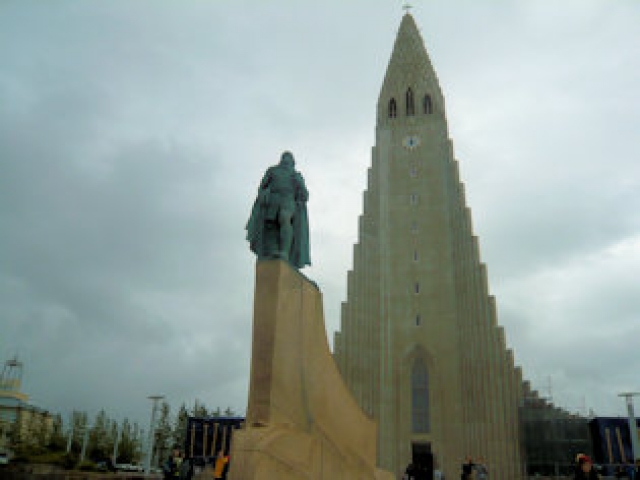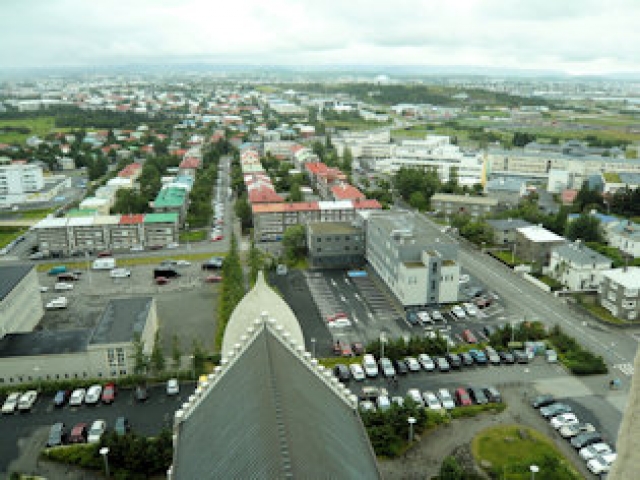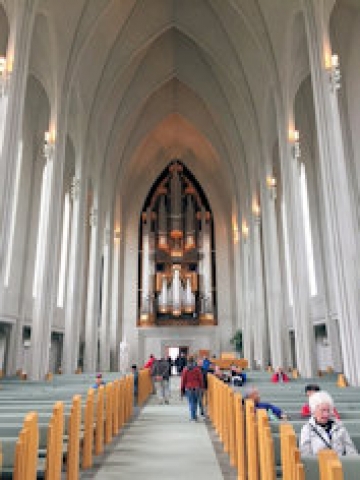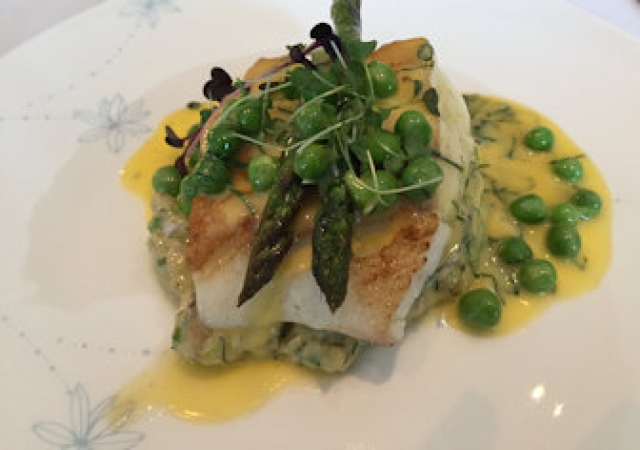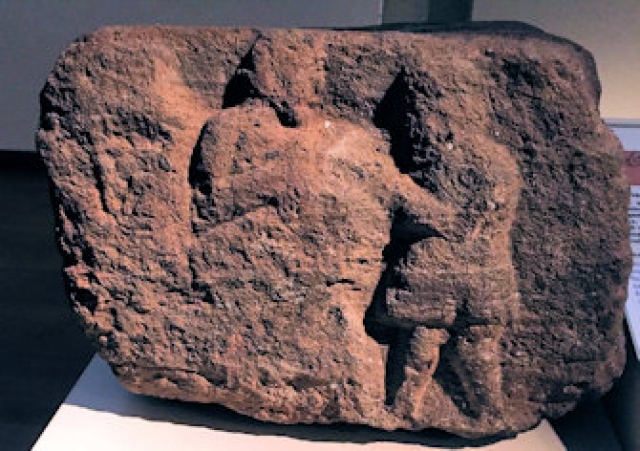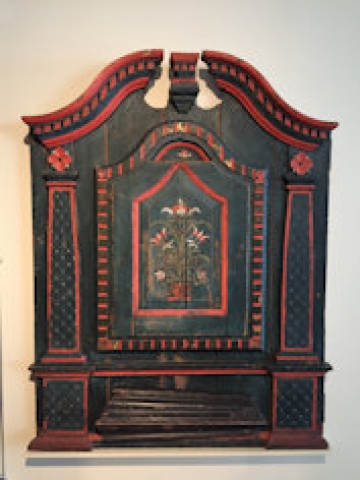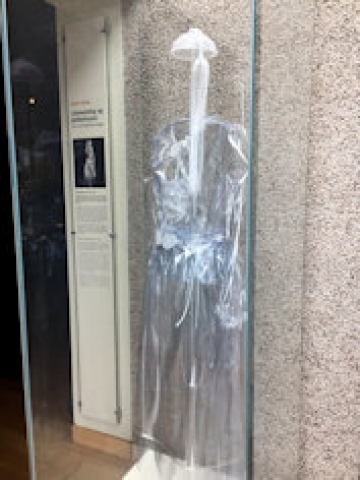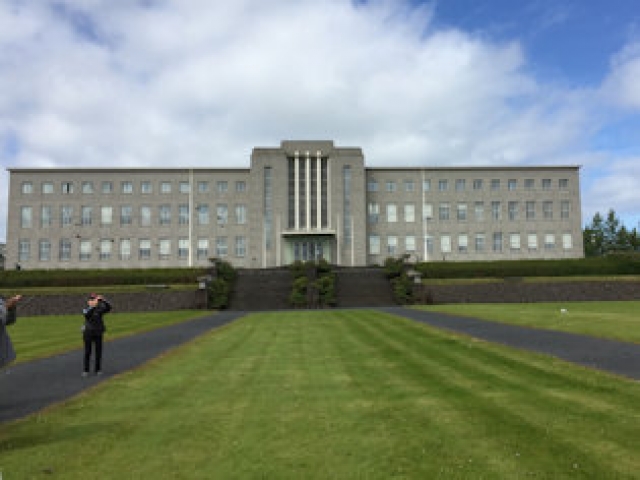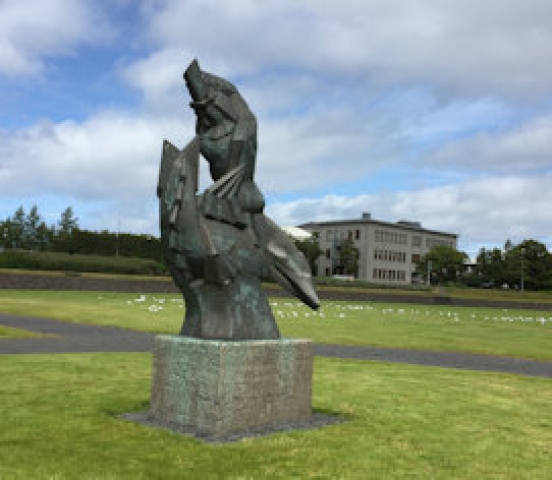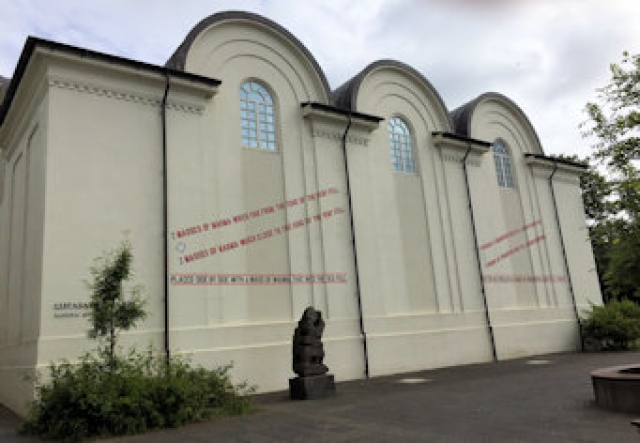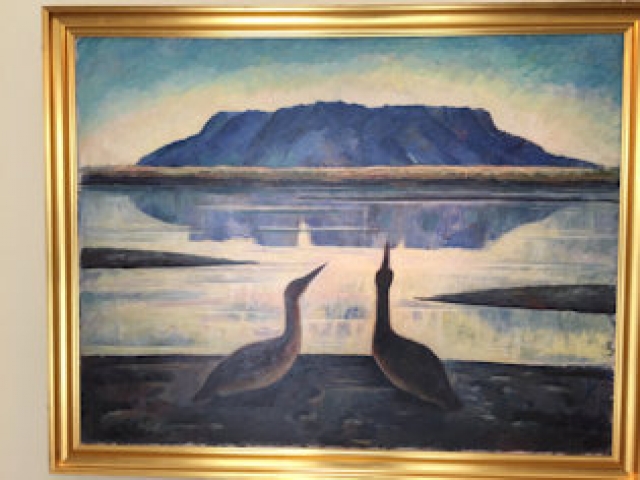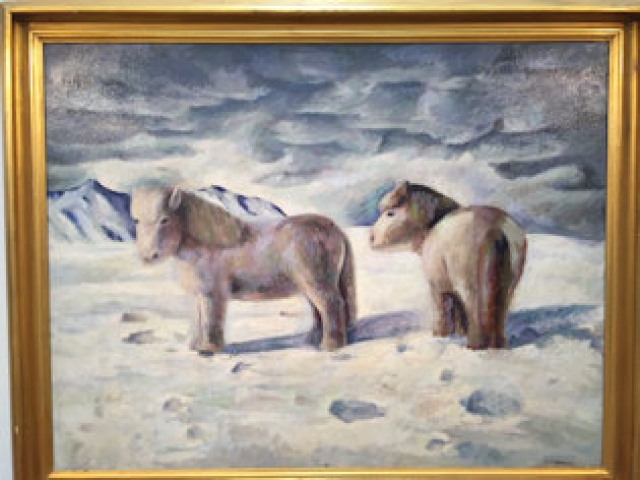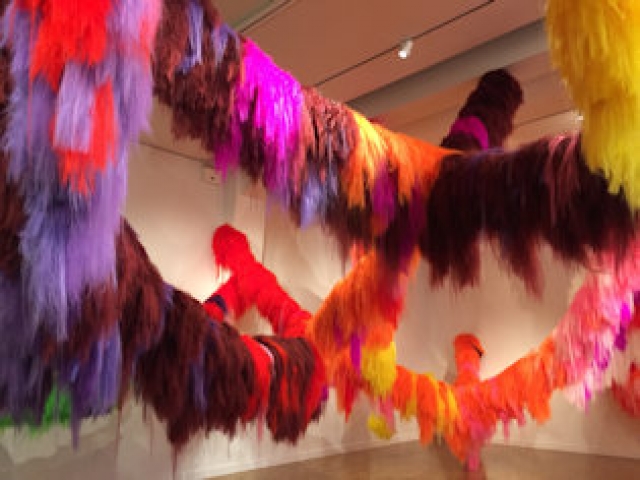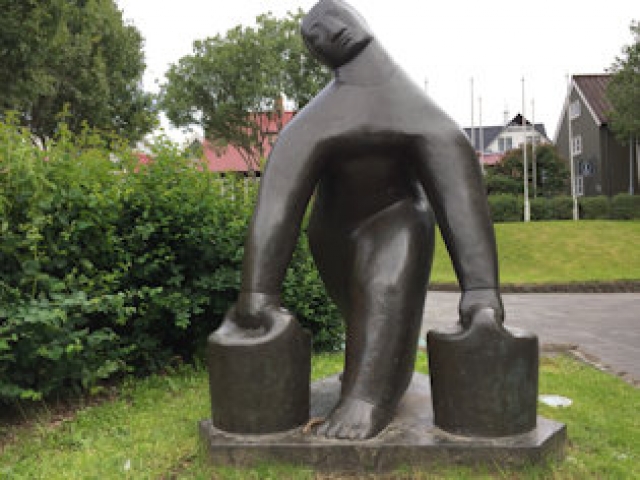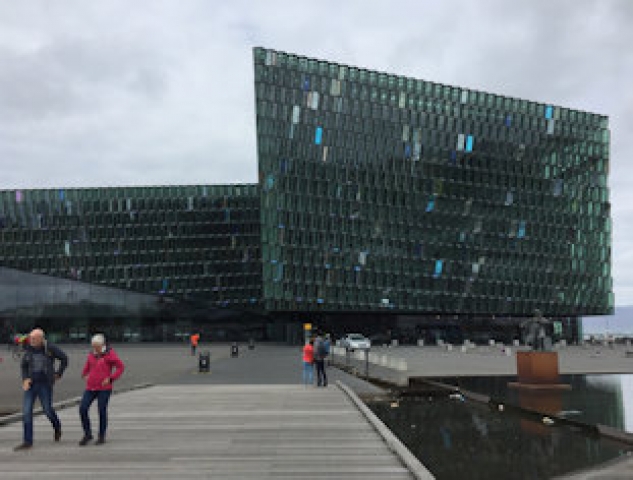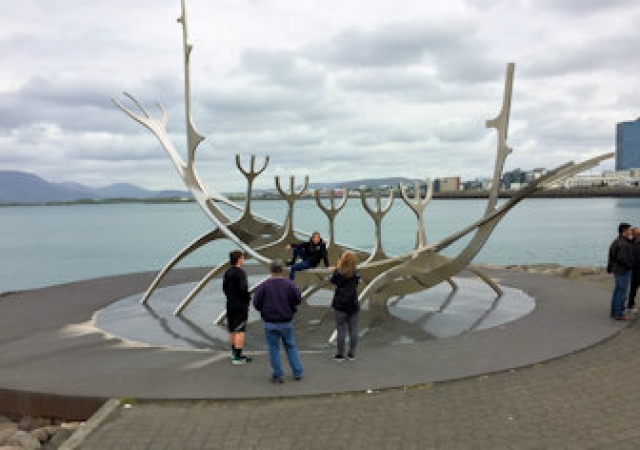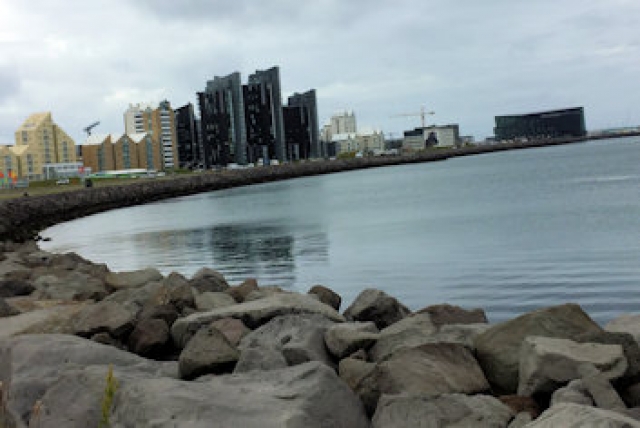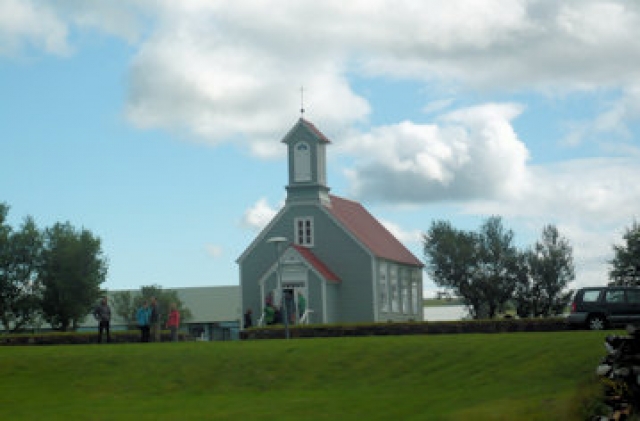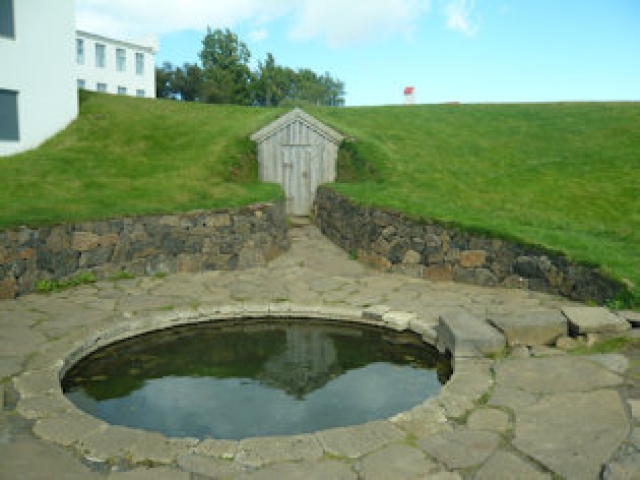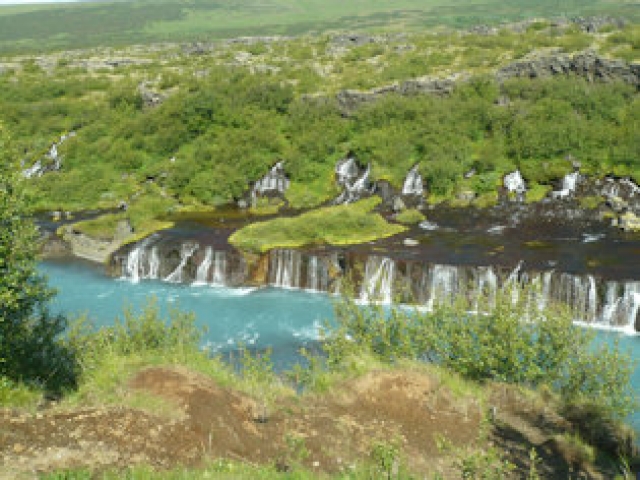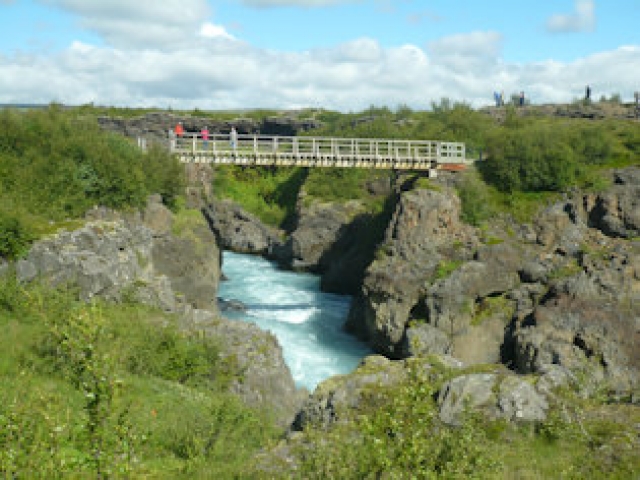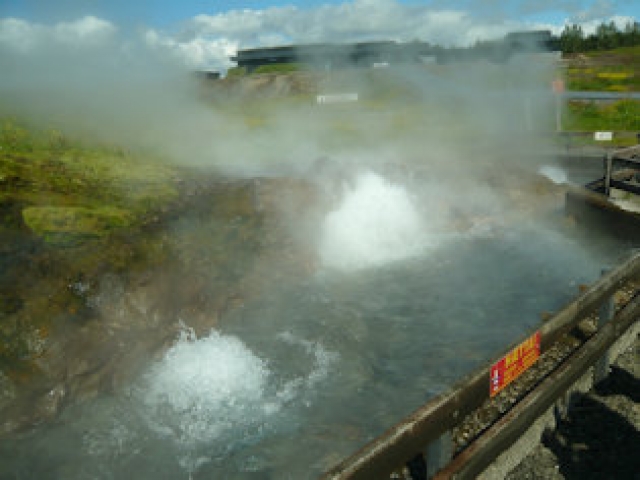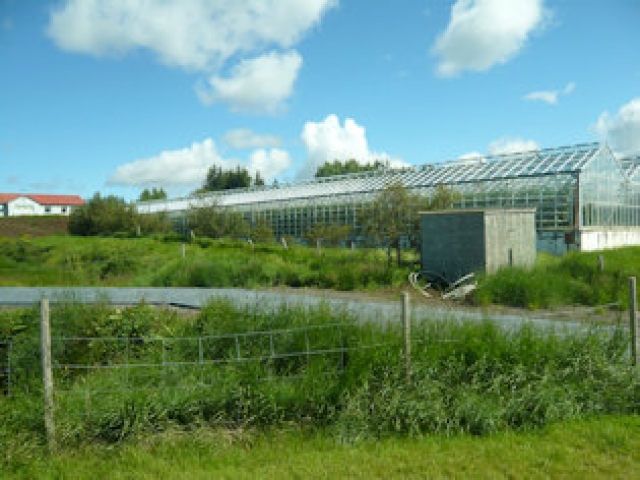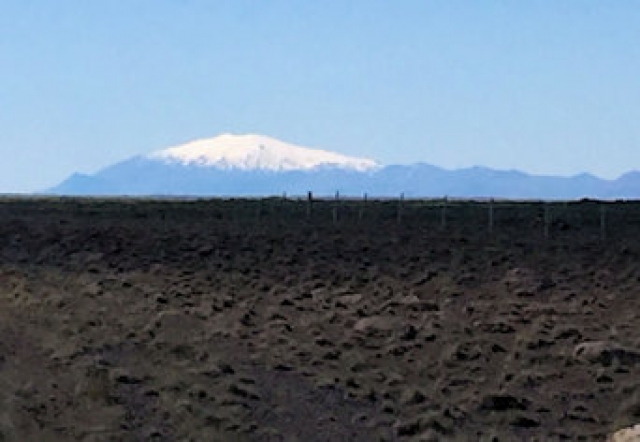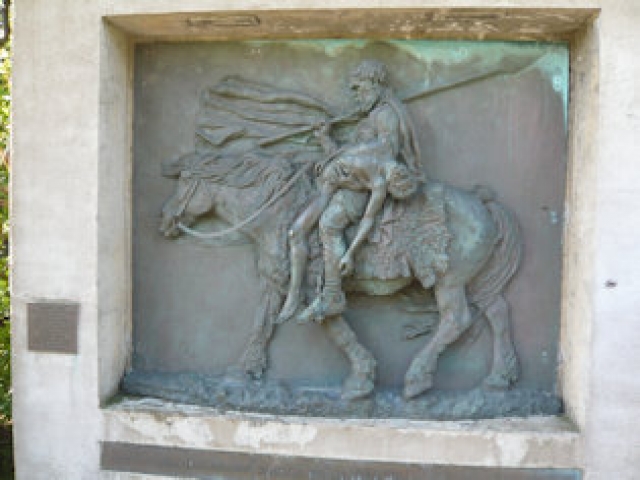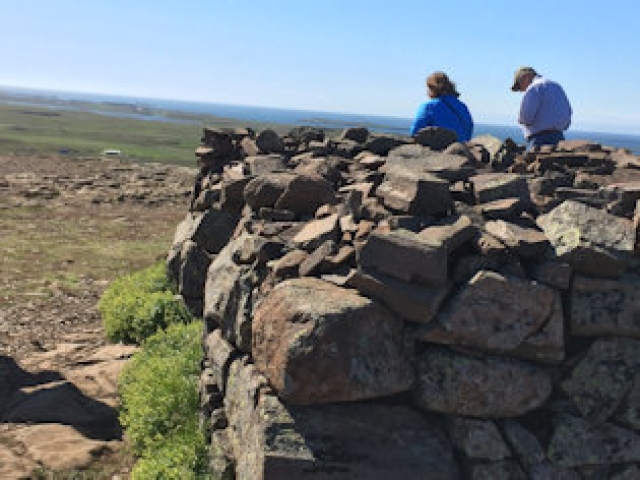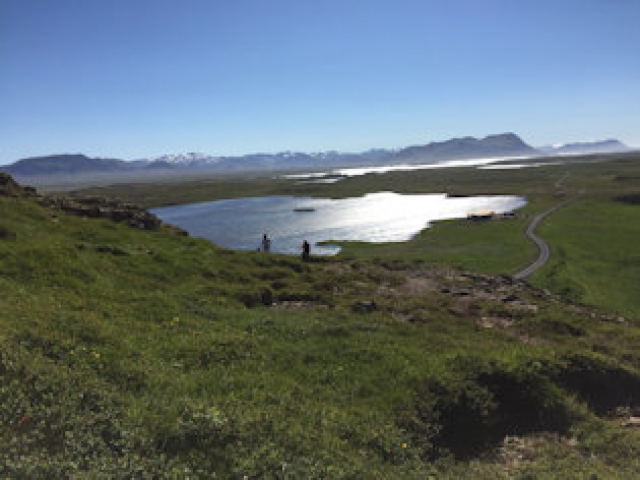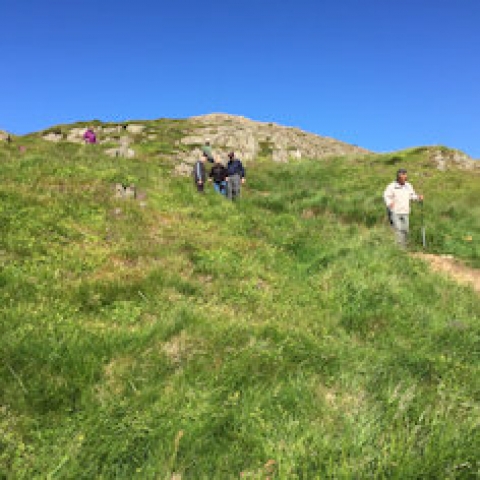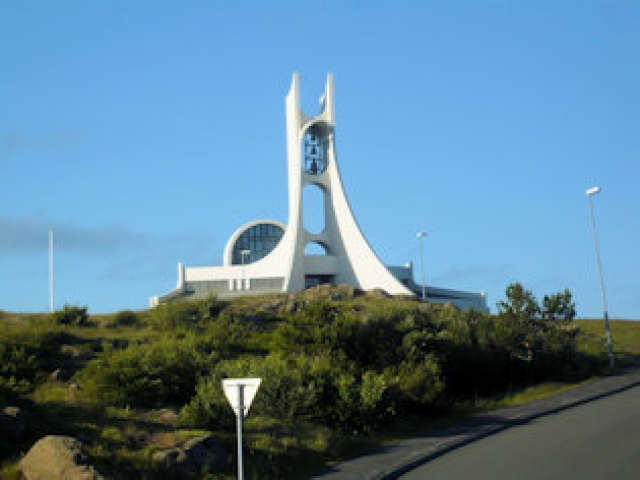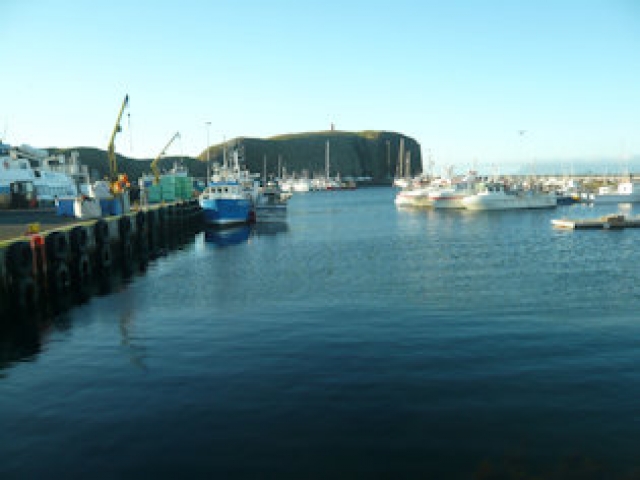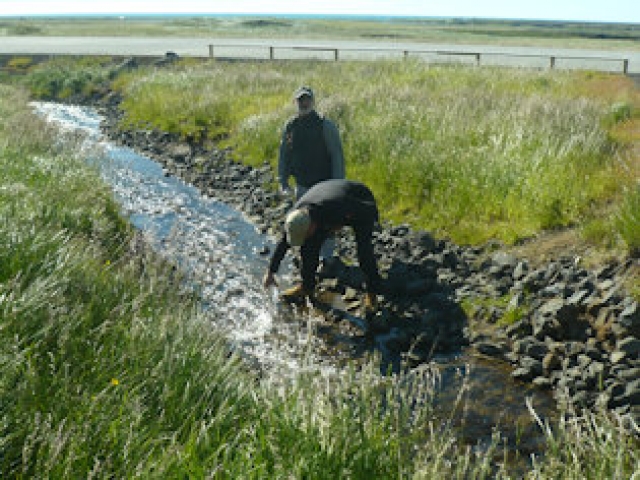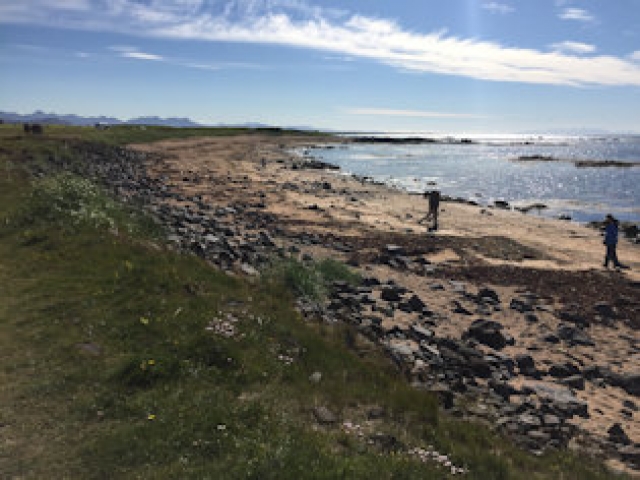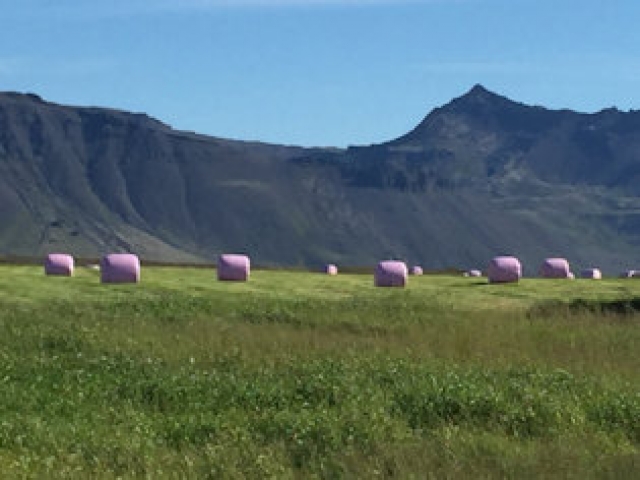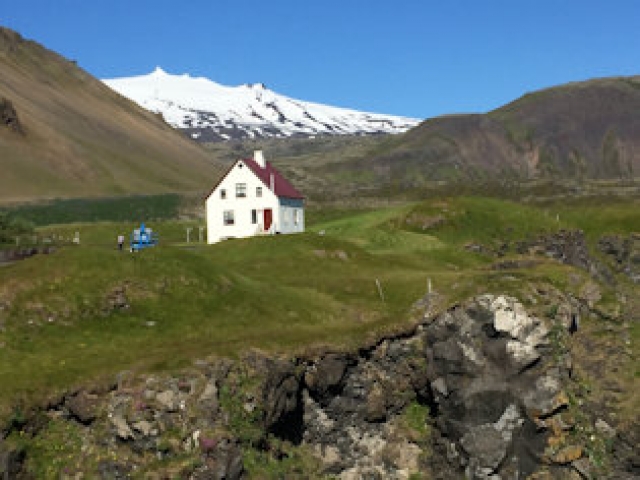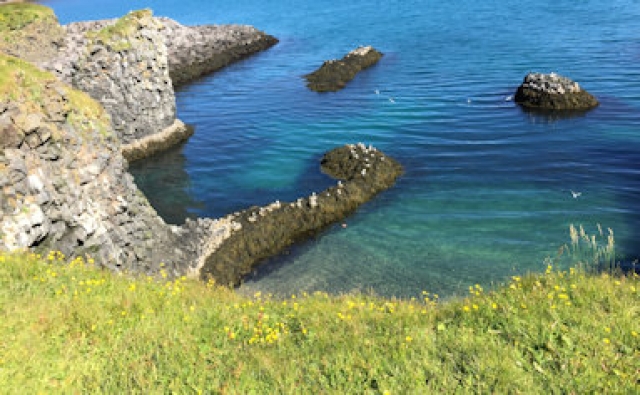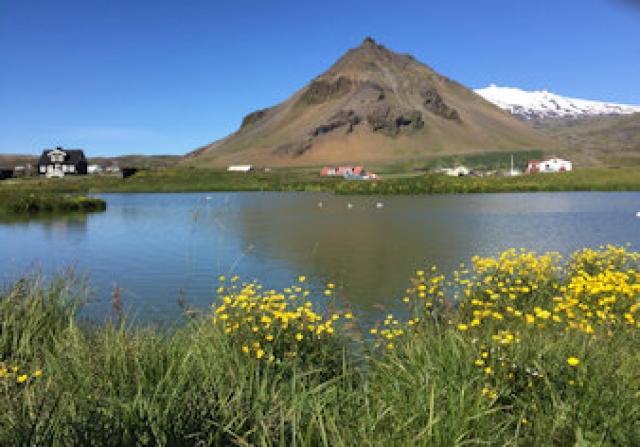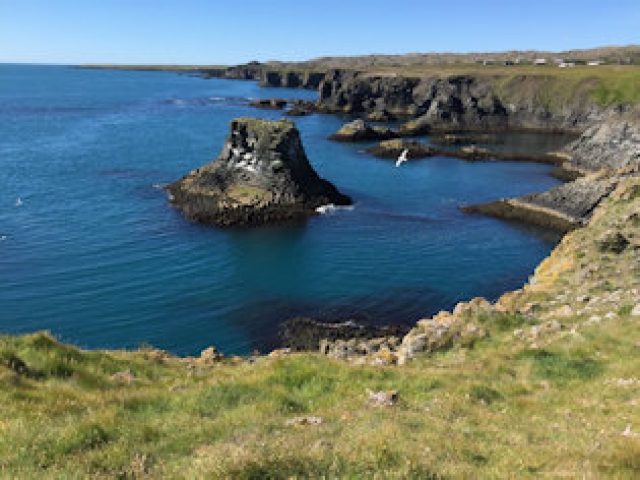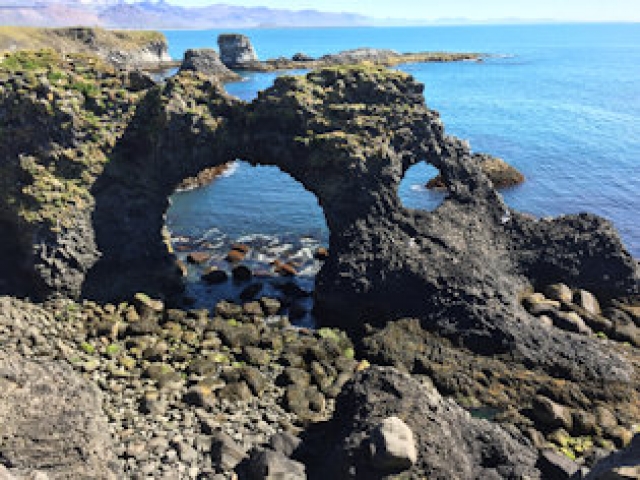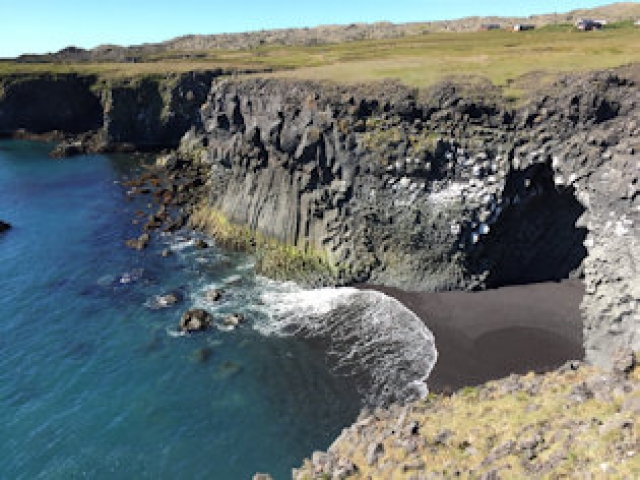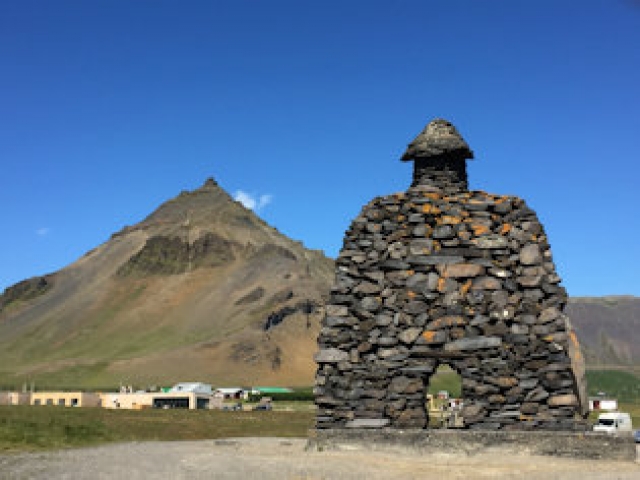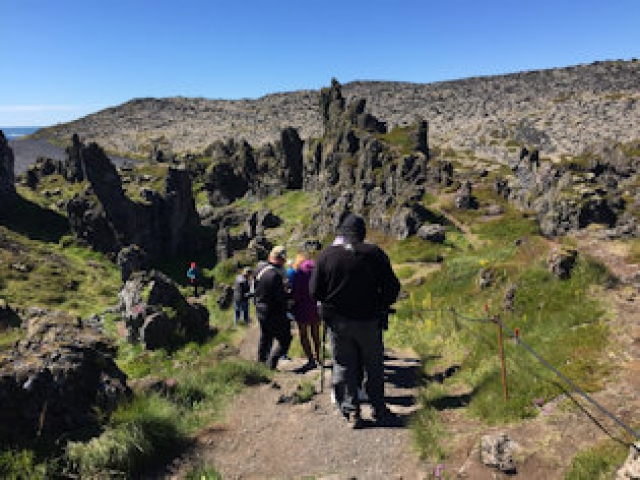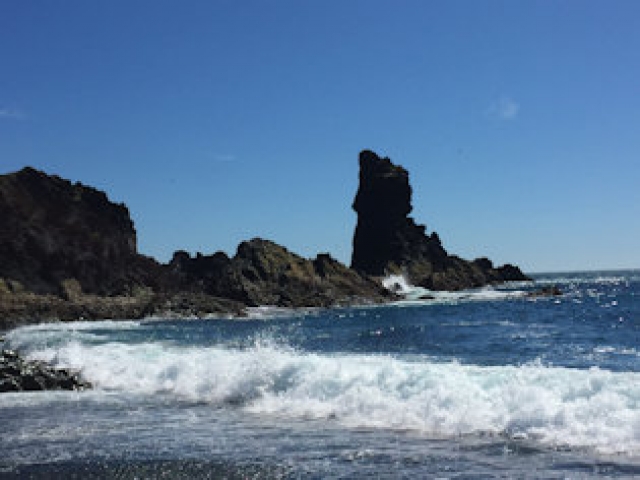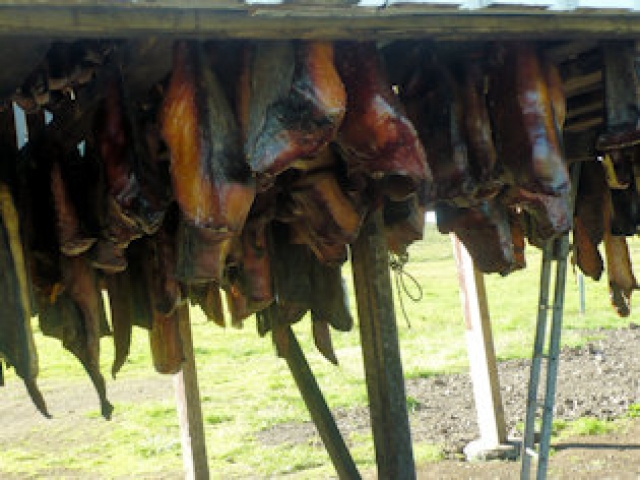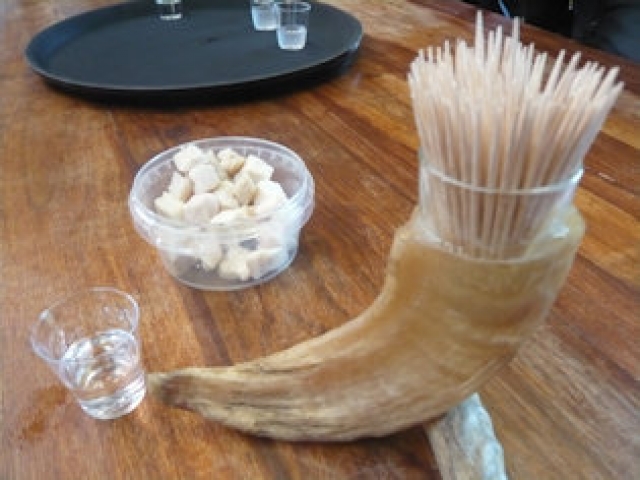Iceland: Part Two
Reykjavik and Western Iceland
By: Zeren Earls - Aug 27, 2017
Our appetites whetted by our pre-trip to the Westman Islands, we flew from Heimaey to Reykjavik to begin our main tour of Iceland. Following a short 25-minute flight, we traveled to the Hilton Reykjavik Nordica to meet up with the three new members of our full group of fifteen. The Hilton, situated on a hill with sweeping views of the city, was our home for one night at the beginning and then again for two nights at the end of the tour. This introduction to Reykjavik will cover all three days together rather than separately.
On the first day, following a lavish buffet breakfast including smoked salmon, we took a public bus to the historic town center of Reykjavik, Europe’s northernmost capital. To get oriented in the city, which houses around one-third of Iceland’s total population of 340,000, we first walked over to City Hall to view a large relief map just beyond the entrance hall. A post-modern edifice overlooking Tjörnin Lake, City Hall rewarded us with views of waterfowl swimming gracefully across the way. After a walk about Austurvöllur Plaza, laid out around a statue of nationalist hero Jon Sigurdsson and home to the 19th-century grey basalt Parliament Building along with other historic architecture, the group dispersed so we could explore the city on our own.
Together with another traveling colleague, I started at the Archeology Museum, which centers around the excavation of a 10th-century Viking longhouse, providing insight into how early settlers lived. We then walked uphill to Hallgrimskirkja, with a Leif Ericson statue in front, visible from most points in the city. The striking modern church was built in 1974, with a 244-foot-tower designed to resemble columns of Iceland’s basaltic lava. We climbed the tower for panoramic views of the city across to Mt. Esja. Walking back to the town center, we then took a public bus back to our hotel, where the group reassembled over a welcome meeting and dinner. The reward for the long day was our dinner, which featured cod loin with pea sauce, topped with asparagus and mushrooms – delicious and beautifully presented.
Reykjavik, meaning “Smoky Bay”, was named by early settlers because of the steam from geothermal springs around the city. The story of the settlement unfolds at the National Museum of Iceland, where a permanent exhibition on The Making of a Nation provides a journey through time. Tracing history to the present day, displays range from research on the first settlers to key periods in the country’s development, and include stone reliefs, wood carvings and even contemporary crafts. Next to the museum is the University of Iceland, founded in 1911. It has a good book store, along with a cafeteria, where one can get lunch at reasonable prices. Outside of the main area is a statue named Saemundur and the Seal, depicting a man holding a Bible, while riding on a seal. Based on an old folk tale, the Bible protects the man from the devil disguised as a seal.
Other attractions in the city are the National Gallery of Iceland and the new Harpa Concert Hall. The gallery has a fine permanent collection of works from various countries and periods. In the exhibition Treasures of a Nation, works display the evolution of art in Iceland from the early 19th century to our times, including sculptures and temporary installations. One such installation by Hrafnhildur Arnardottir was created out of colorful artificial hair, which the audience was invited to touch.
The Harpa Concert Hall is the winner of the Mies van der Rohe Award, given by the European Union for contemporary architecture. It is a striking building with a glass facade designed by Olafur Eliasson to resemble the mosaic-like basalt columns scattered throughout Iceland. With a water view, its glittering polygons reflect the sea and the sky in a kaleidoscopic light show. Home to Iceland’s Symphony Orchestra, the Icelandic Opera, the Reykjavik Big Band and the Reykjavik Chamber Orchestra, the building has four concert halls, the largest seating 1800.
Departing from windy Reykjavik, we left the city’s typically gray skies behind and headed north to Borgarfjörður agricultural district. On the way, we stopped in Reykholt to see Snorri’s Pool, an archeological site dating from the 13th century. The outdoor pool, fed by a hot spring, is 4 meters in diameter and has a circular rim that serves as a bench along its walls. It is named after Snorri Sturluson, one of Iceland’s first writers, who recorded much of Norse mythology. Once a bather in the pool, Snorri was murdered by his enemies on orders from the King of Norway.
Continuing on, we reached Hraunfossar, a 2,900-foot stretch of lava where a multitude of springs cascade through the volcanic rocks, tumbling into the Hvita river. A footbridge crosses the Hvita at the churning Barnafoss (Children’s Waterfall), its name recalling two children who fell in and drowned. Driving through the unspoiled landscape, we arrived at the Deildartunguhver thermal area, which emits nearly 50 gallons of boiling water per second, the highest flow of any hot spring in Europe. Geothermal water is pumped through distribution pipes to surrounding cities for central heating, as well as to hothouses for agricultural purposes.
As we drove by verdant lands with horses grazing, the glacial cap of Snæfellsjökull emerged in the distance beyond lava fields. This is where a passage in Jules Verne’s novel Journey to the Center of the Earth begins, taking explorers on a remarkable descent to the bowels of the earth. The focus of Snæfellsnes Peninsula, the glacier sits inside the crater of a 700,000-year-old volcano at 4,743 feet, dominating the countryside. Although Iceland emerged from its glacial state about 10,000 years ago, it remains a land of glaciers and ice caps, and is “just an infant in geological terms, changing a lot from year to year”, says Baldur, our trip leader.
A visit to the Settlement Center in Borgarnes, home of Egill Skallagrímsson, introduced us to Iceland’s legendary hero and poet. Housed in a restored building by the harbor, the center offers two major exhibits providing insights into the discovery and Norse settlement of Iceland and the Saga Era. Outside the museum, a stone tower marks the grave of Skalla Grims, Iceland’s first Norse settler and Egill’s father. The building has a nice restaurant, where we enjoyed lunch.
The last adventure of the day was hiking to Helgafell (“Holy Mountain”), a 240-foot hill overlooking a beautiful bay. According to folklore, hikers are granted three wishes, provided they refrain from looking back or speaking on the way. To be fulfilled, wishes have to be of good intent, need to be made while facing east and may not be shared with anyone else. A wall remnant from an Augustinian monastery at the summit provides a contemplative spot for making a wish. Having complied with all the conditions, we descended the rugged hillside in single file, contemplating our wishes.
The day’s adventures ended in Stykkishólmur, the biggest town on the Snæfellsnes Peninsula, where we spent two nights. The picturesque town, built up around a natural harbor, used to be a Danish trading post and has well-preserved old houses, along with a modern church on a hill.
In the morning, we ventured out to explore the Peninsula, starting on the south side, which is lined with fishing villages. It turned out to be a beautiful sunny day; we stopped by the Olkelda Mineral Spring, where water is piped from the ground to a fountain. We filled up our bottles with the iron-rich water, evidenced by the reddish color at its source.
Following the coastline, we observed water birds perched on rocks and saw where landowners used to harvest seals. Due to protests against seal harvesting and a ban imposed by the European Union, the international commercial seal market has plummeted since the 1980s, although limited hunting by permit is allowed.
Arriving at another spring, we once again stopped to fill our bottles, this time bending over the running water at ground level. We then continued on to Arnarstapi known for its coastline, which is a designated nature reserve. As we approached Arnarstapi at the foot of Stapafell, a small but distinct mountain, a beautiful landscape of bailed hay rolled up in pink plastic, looking like giant marshmallows, attracted attention to the fight against breast cancer. As we approached the harbor, columnar basalt ravines, grottos, arches and blowholes surrounded by abundant birdlife provided a feast of natural wonders. A giant sculpture of Bárður Snæfellsás, the legendary half-troll half-man the peninsula is named after, ushered us into town. Following a walk along the coast, we ventured into the lava field, negotiating our way through large and small black rocks to Hellnar, where we stopped for lunch. The outdoor setting of the Beach House Café felt like a ski resort on a sunny day, as I was wearing several layers of clothing.
At the southern tip of the peninsula near Dritvík is Djúpalón, a deep lagoon with a beautiful pebbled beach. Here we were able to walk down to the sea to view giant rocks with mysterious forms emerging from the ocean. The area’s history is marred by a shipwreck in which many drowned. Not knowing how to swim is therefore considered bad luck in Iceland, which now has many swimming pools. Swimming classes once a week are compulsory in school.
The north side of the Snæfellsnes Peninsula is lined with fishing villages as well. Stopping briefly in Ólafsvík, we continued on to Bjarnastaðir to visit the Shark Museum on the Bjarnarhöfn farmstead. The museum offers a window onto a unique Icelandic tradition – the hunting and processing of Greenland shark. Displays range from fishing boats to processing tools, along with procedures for hunting and fermenting in special tubs for three months, which neutralizes the poison when the meat is fresh. The tour ended with a tasting of hákarl – fermented shark meat – accompanied by Brennivín, Icelandic schnapps. We also visited the drying house out back, the final step in processing the meat.
Thus completing our tour of the Snæfellsnes Peninsula in western Iceland, we returned to our hotel in Stykkishólmur, as we looked forward to starting our trip to northern Iceland the following day.
(To be continued)


